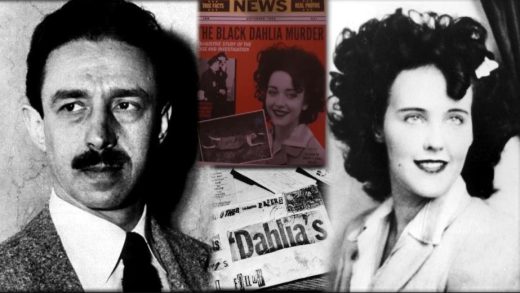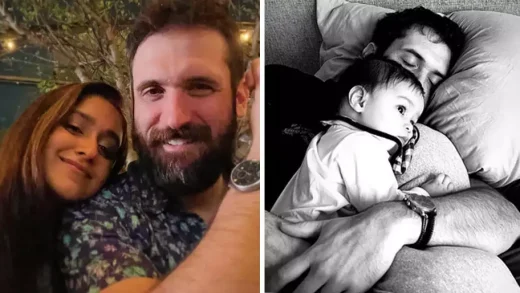Wrestling has for quite some time been a privately-run company, passing hereditary sturdiness and acquired energy for a daily existence out and about starting with one age then onto the next. Also, no family has been pretty much as compelling or weighty as the McMahon family, which has more than four ages formed the whole scene of expert wrestling in its own picture.

Most wrestling families have procured their notoriety in the ring, yet a greater part of the McMahons’ developments and body hammers have come in the meeting room. Their story returns right to the mid 1950s, when Jess McMahon, the child of Irish workers in New York, started what might one day, and numerous advancements later, become the WWE, the biggest and most predominant ace wrestling association on the planet.
[AdSense-A]
Jess began as an innovative games advertiser in New York City, overseeing and advancing a confining club Harlem. He engaged in baseball, establishing a couple of Negro League ballclubs nearby, ran a gambling club and afterward engaged in the incipient universe of expert wrestling. Jess, never one to squander a business opportunity, started advancing wrestling matches, as well, in both Long Island and New York City, including at Madison Square Garden.
Vince McMahon Sr. saw the possibility to assemble a wrestling realm
It was Jess’ child, Vincent “Vince” J. McMahon Sr., that truly took to the wrestling industry, which he imagined as an amazing scene equipped for enchanting a cross-segment of Americans. In 1953, the dad and child pair dispatched the Capitol Wrestling Corporation (CWC) and before long collaborated with a long-lasting grappler turned-advertiser named Joseph “Honks” Mondt, who had upset both the foundation and dramatic skill of the scripted game.

The CWC joined the National Wrestling Alliance (NWA), the administering body authorized and regulated most wrestling across the United States around then. In contrast to Major League Baseball or the NFL, there was nobody prevailing wrestling class around then. All things being equal, the game had a more diffuse framework, with various advancements “claiming” diverse geographic domains. CWC stretched out its range down to the mid-Atlantic when Vince Sr. purchased a field in the city and started putting on normal matches.
[AdSense-B]
What truly created a ruckus was Vince Sr’s. effective exertion to get two-hour wrestling events broadcast on nearby TV. In 1956, Heavyweight Wrestling started a short sudden spike in demand for the Dumont Network’s direct in D.C. and afterward got on TVs around the New York metropolitan region through partnership.
Other wrestling advertisers were careful about the thought and loathed McMahon for seeking after it, accepting that putting wrestling on TV for nothing would slaughter the motivating force for individuals to pay to see it face to face. Wrestling organizations made practically the entirety of their cash from ticket deals as they trouped their individual domains, so the CWC, they accepted, was putting the entirety of their jobs in question.
Vince Sr., clearly, didn’t get it. All things being equal, he calculated that the exact inverse would occur, with normal TV communicates snaring watchers and captivating them to come down to see the matches in the substance.
“On the off chance that this is the manner in which TV slaughters advertisers,” he said, “I will kick the bucket a rich man.”
McMahon’s hypothesis demonstrated right, yet the more extensive openness to the item he was selling additionally demonstrated questionable. He had faith in huge, blustering shows, with chivalrous heroes and trouble makers that overflowed evil. One of the characters specifically, Karl Von Hess, a Nazi who delighted in savagery prior to getting beaten at the peak of each show, drew the shock of guardians across the area.

[AdSense-A]
This solitary caused more to notice the item, which permitted Vince Sr. to answer carelessly to letters to the editorial manager in neighborhood papers and in interviews.
“There is a basic answer for this,” he once broadly reacted. “There is a handle on every TV set for changing the channels. In the event that the show doesn’t appear to you, you should simply flip a handle and watch something different.”
By 1963, the CWC was developing at a fast speed, making clashes with the NWA and driving Vince Sr. to frame the World Wide Wrestling Federation (WWWF), which worked as its own body to endorse title sessions. More achievement followed, particularly once they dispatched much greater TV shows in 1971 and 1972, including WWWF Championship Wrestling, which went through 1986.

[AdSense-B]
Vince McMahon Jr. transformed his dad’s organization into an overall domain
In 1982, Vince Sr. offered the WWWF to his child, Vincent “Vince” McMahon Jr., who had shaped the organization Titan Sports only a couple a very long time earlier. Wrestling was all the while something of a regional business, yet the third McMahon to maintain the business had great plans on overall mastery.
At the point when he assumed control over, the privately-run company, which, in a slight however weighty rebrand became WWF, was in a dead heat with the NWA and a more up to date rival, the AWA. Vince Jr. was prepared to take them to the tangle and started joining a portion of the top gifts from different advancements. Some stuck in the WWF longer than others, yet unmistakably the more youthful McMahon was prepared to battle his way to the top.
One of the main enormous haymakers that the new proprietor tossed at his opponents was covertly moving to get one of the NWA’s greatest advancements, Georgia Championship Wrestling. That gave him admittance to considerably more ability (counting future symbol Hulk Hogan) and, all the more significantly, debilitated a key opponent. The way Vince Jr. reported the buyout was an early taste of his style for the emotional. On the Saturday evening after the arrangement shut, Vince Jr. showed up on TV during the GCW’s pined for schedule opening on Ted Turner’s Superstation to uncover his takeover. The occasion got known as “Dark Saturday” and denoted a significant turn in the wrestling wars.

[AdSense-A]
The McMahons additionally turned into a critical piece of the show
Despite the fact that they shared desire, one of the huge contrasts between Vince Sr. also, Vince Jr. was that the senior accepted that proprietorship should avoid the spotlight while the more youthful McMahon embraced being important for the activity. He was a ringside observer starting in the mid 1970s and proceeded in the part after he purchased the organization.
For a lot of that time, the kayfabe (or anecdotal storyline) introduced different men as the executive and proprietor of the WWF. That finished in 1997 when Vince Jr. plotted to astound star Bret Hart in a match during a significant occasion in Canada. Vince Jr. jumped into the ring to assume liability for the fiercely disliked arrangement, named the “Montreal Screwjob,” after it was executed. At that point, it involved genuine seeping into fiction — he truly did shock and annoy Hart with the match’s result — and acquainted the world with another character: Mr. McMahon.
[AdSense-B]
In the course of the most recent 24 years, Vince Jr. has often been essential for storylines, playing an evil reprobate and foil to a portion of the organization’s generally incredible and famous hotshots. His competition with “Undeniable” Steve Austin was the fundamental point of convergence of the WWE’s activity for quite a while in the last part of the ’90s and mid 2000s, and his own kids started to get included as they arrived at adulthood.
The McMahons additionally turned into a huge piece of the show
Despite the fact that they shared aspirations, one of the huge contrasts between Vince Sr. what’s more, Vince Jr. was that the senior accepted that proprietorship should avoid the spotlight while the more youthful McMahon embraced being essential for the activity. He was a ringside observer starting in the mid 1970s and proceeded in the job after he purchased the organization.

For a lot of that time, the kayfabe (or anecdotal storyline) introduced different men as the executive and proprietor of the WWF. That finished in 1997 when Vince Jr. plotted to astound star Bret Hart in a match during a significant occasion in Canada. Vince Jr. jumped into the ring to assume liability for the fiercely disliked arrangement, named the “Montreal Screwjob,” after it was executed. At that point, it involved genuine seeping into fiction — he truly did shock and irritate Hart with the match’s result — and acquainted the world with another character: Mr. McMahon.
[AdSense-A]
In the course of the most recent 24 years, Vince Jr. has as often as possible been essential for storylines, playing a detestable lowlife and foil to a portion of the organization’s generally incredible and well known hotshots. His competition with “Undeniable” Steve Austin was the fundamental point of convergence of the WWE’s activity for quite a while in the last part of the ’90s and mid 2000s, and his own kids started to get included as they arrived at adulthood.
Tags:vince mcmahon,stephanie mcmahon,julian mcmahon,ed mcmahon,shane mcmahon,peter mcmahon,jim mcmahon,linda mcmahon,vince mcmahon net worth,stephanie mcmahon nude,vince mcmahon meme,vince mcmahon,stephanie mcmahon,shane mcmahon,julian mcmahon,linda mcmahon,vince mcmahon net worth,steve mcmahon




เพิ่มโบนัส โปรโมชันอัดแน่นเต็มพิกัด ท้าวัดดวลเกมสล็อตแจ๊กพ็อตเป็นล้าน ไม่เหมือนกันที่ห่างไกลจากเว็บไซต์พนันทั่วๆไปต้องยกให้การแจกโบนัสจัดเต็มดูด อัดฉีดส่งเสริมผู้กล้าที่มาท้าประลองสล็อตออนไลน์ที่นอกจากรายได้ผลตอบแทนในอัตราการจ่ายที่สูงสุด ทุกคนสามารถรับความสนุกได้กับโบนัสฟรีสปินถล่มทลาย โน่นแสดงถึงจังหวะสำหรับในการคว้าชัยทำเงินจากเกมพนันของเราได้มากขึ้น แจ๊กพ็อตแจกถี่ แจกคราวหลายล้านบาท ไม่อยากที่จะให้ทุกคนพลาด งัดสกิลโชว์ความสามารถ โอกาสที่คว้าเงินล้านกลับบ้านอาจเป็นของคุณ
12 หนังสือที่คุณต้องหลงรักถ้าคุณชอบสมัคร ufabet
An outstanding share! I’ve just forwarded this onto a coworker who has been conducting a little homework on this.
And he actually bought me breakfast simply because I found it for him…
lol. So allow me to reword this…. Thanks for the meal!!
But yeah, thanx for spending some time to talk about
this topic here on your web page.
ufabet เว็บไซต์พนันออนไลน์ที่ให้บริการมากมายครบวงจร ตั้งแต่แทงบอล สล็อต บาคาร่า คาสิโนออนไลน์ เป็นเว็บไซต์ครบวงจรสำหรับนักเสี่ยงโชคที่ปรารถนาลงทุน ตัวเว็บเป็นภาษาไทยใช้งานง่าย มีระบบที่ปลอดภัย ใช้งานง่าย และก็เว็บของพวกเราพร้อมให้ บริการ 24 ชั่วโมง ให้กับลูกค้า
Nice blog Trendweb
I’m really loving the theme/design of your weblog. Do you ever run into any browser compatibility
issues? A handful of my blog readers have complained about my
website not working correctly in Explorer but looks great in Safari.
Do you have any solutions to help fix this issue?
Hello,
MP3/FLAC, Label, LIVESETS, Music Videos, TV Series.
Best regards,
0day MP3s
Hі! I just want to give you a big thumbs
up foг the excellent info yⲟu have here on this post.
I am retսrning to your web site for more soon.
Hi! I’ve been following your website for a while now
and finally got the courage to go ahead and give you a shout out from Dallas Tx!
Just wanted to tell you keep up the fantastic work!
Good day! This is my 1st comment here so I just wanted to give a quick shout out and say
I really enjoy reading your articles. Can you suggest any other blogs/websites/forums that deal with the
same subjects? Many thanks!
Hi there, its nice piece of writing about media print, we
all be aware of media is a enormous source of information.
ufabet เว็บพนันออนไลน์ที่ให้บริการนานัปการครบวงจร ตั้งแต่แทงบอล สล็อต บาคาร่า คาสิโนออนไลน์ เป็นเว็บไซต์ครบวงจรสำหรับนักเสี่ยงดวงที่อยากลงทุน ตัวเว็บไซต์เป็นภาษาไทยใช้งานง่าย มีระบบระเบียบที่ปลอดภัย ใช้งานง่าย และเว็บไซต์ของเราพร้อมให้ บริการ 1 วัน ให้กับลูกค้า
Very good post. I am going through some of these issues as well..
Wonderful blog! I found it while surfing around
on Yahoo News. Do you have any tips on how to get listed in Yahoo News?
I’ve been trying for a while but I never seem to get there!
Thank you
Hi there it’s me, I am also visiting this web site daily,
this web site is genuinely pleasant and the visitors are in fact sharing good thoughts.
If you are going for finest contents like I do, only pay a visit
this site every day as it offers feature contents, thanks
With havin so much written content do you ever run into any problems
of plagorism or copyright infringement? My website has a lot of exclusive content I’ve either
written myself or outsourced but it looks like a lot of it
is popping it up all over the internet without my permission. Do you know
any methods to help reduce content from being ripped off?
I’d really appreciate it.
Thanks very nice blog!
Its such as you read my mind! You seem to know so much approximately
this, such as you wrote the ebook in it or something.
I believe that you can do with a few percent to power the
message home a bit, but other than that, this is excellent blog.
A fantastic read. I’ll definitely be back.
Just wish to say your article is as astonishing.
The clearness in your put up is just excellent and
i can assume you’re knowledgeable in this subject. Fine together with
your permission let me to seize your RSS feed to keep updated with forthcoming post.
Thank you 1,000,000 and please carry on the
rewarding work.
What’s Going down i am new to this, I stumbled upon this I have discovered It positively useful and it has aided me out loads.
I’m hoping to give a contribution & aid different customers like its
aided me. Good job
Yes! Finally someone writes about 918kiss plus.
Wow, amazing blog layout! How long have you ever been blogging for?
you made blogging look easy. The overall glance of your
web site is wonderful, let alone the content material
Great post. I was checking constantly this blog and
I am impressed! Extremely helpful information particularly the last part 🙂 I care for such info much.
I was looking for this certain information for a long time.
Thank you and best of luck.
When I originally commented I appear to have clicked on the -Notify me when new
comments are added- checkbox and now whenever a comment is added I recieve 4 emails with the same comment.
There has to be a means you are able to remove me
from that service? Thanks a lot!
Wow! This blog looks exactly like my old one! It’s on a completely different subject but it has
pretty much the same page layout and design. Outstanding choice of colors!
Very nice post. I just stumbled upon your weblog and wished to say that I’ve really enjoyed browsing your blog posts.
In any case I will be subscribing to your rss feed and I
hope you write again soon!
These are in fact fantastic ideas in regarding blogging.
You have touched some good points here. Any way keep up wrinting.
I love what you guys tend to be up too. This kind of
clever work and reporting! Keep up the wonderful works guys I’ve included you guys to my blogroll.
At this moment I am going to do my breakfast, later than having my breakfast coming yet again to read further news.
Many many thanks please stay with bio site
Many many thanks please stay with bio site
Magnificent goods from you, man. I’ve understand your stuff previous
to and you are just too wonderful. I actually like what you’ve
acquired here, certainly like what you are stating and the way in which you
say it. You make it enjoyable and you still take care of to
keep it wise. I can’t wait to read much more from you. This is actually a wonderful web site.
My website – club suncity pc download
Many many thanks please stay with bio site
Hurrah! At last I got a website from where I be able to genuinely get helpful information regarding my study and knowledge.
My website – club suncity pc download
Many many thanks please stay with bio site
An interesting discussion is definitely worth comment. There’s no doubt that that you ought to publish more on this topic, it may not be a taboo subject but usually people don’t speak about these topics.
To the next! Many thanks!!
Many many thanks please stay with bio site
I do trust all of the concepts you have presented for your post.
They are really convincing and can certainly work. Nonetheless, the posts are too short for beginners.
May just you please extend them a little from subsequent time?
Thanks for the post.
Many many thanks please stay with bio site
hey there and thank you for your info – I’ve definitely
picked up something new from right here. I did however expertise some technical points using this site, since I
experienced to reload the web site many times previous to I could get it to
load correctly. I had been wondering if your web host is OK?
Not that I am complaining, but slow loading instances times will often affect your placement in google and can damage your high-quality score if advertising and marketing with
Adwords. Anyway I’m adding this RSS to my email and can look
out for a lot more of your respective interesting content.
Make sure you update this again soon.
Many many thanks please stay with bio site
I am really impressed with your writing skills and also with the layout on your weblog.
Is this a paid theme or did you modify it yourself?
Either way keep up the nice quality writing,
it is rare to see a nice blog like this one nowadays.
Many many thanks please stay with bio site
I used to be able to find good advice from your content
Many many thanks please stay with bio site
เคล็ดลับดีๆที่พวกเราจะนำมาให้ทุกคน เพื่อ เป็นแนวทาง การวางเป้าหมายการพนัน
และก็เพื่อใช้สำหรับ การวิเคราะห์บอล ได้ง่ายมากยิ่งขึ้น นั่นเอง โดยกลเม็ดดังที่ได้กล่าวมาแล้วข้างต้นนี้ ก็คือการ ระบุวงเงิน สำหรับเพื่อการพนัน สำหรับการแทงบอล แทงบอลชุด บอลสเต็ป
Top site ,.. amazaing post ! Just keep the work on !